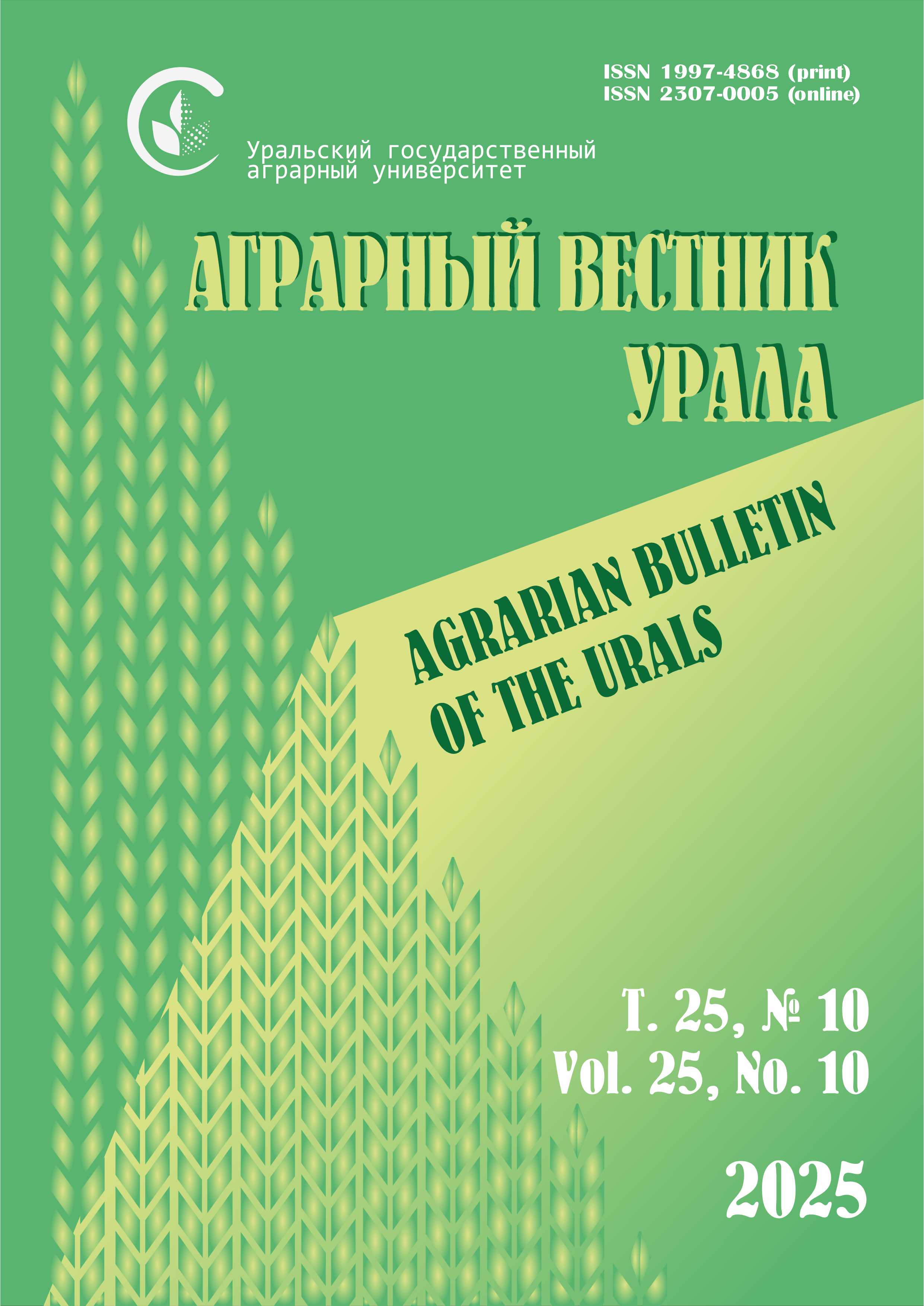Authors: A. A. Tedeyeva, A. A. Abayev, D. M. Mamiyev, V. V. Tedeyeva, N. T. Khokhoyeva North Caucasian Research Institute of Mining and Piedmont Agriculture – Branch of the Vladikavkaz
Scientific Center of the Russian Academy of Sciences, Mikhailovskoye, Russia E-mail: This email address is being protected from spambots. You need JavaScript enabled to view it.
Abstract. The authors present the results of the use of herbicides on winter wheat crops in the steppe zone of North OssetiaAlania. The purpose of the work is to study the effectiveness of the use of herbicides in winter wheat crops. The object of research is two varieties of winter wheat – Trio and Utrish, which differ in maturity, susceptibility to leaf-stem pathogens. The
novelty lies in the fact that for the first time in the steppe zone of the Mozdok region, in the research and production department of the North Caucasus Research Institute of Mining and Piedmont Agriculture of the All-Russian Scientific Center of the Russian Academy of Sciences, the effectiveness of the use of herbicides in winter wheat crops was studied, an economic assessment of the studied agricultural techniques was given. Methods. The counts and observations were carried out according to generally accepted methods described in the “Educational-methodical guide for conducting research in agronomy”. Results. As a result of the use of herbicides and their tank mixture, it contributed to a significant reduction in the number of weeds (the percentage of death in the bumping phase varied between 55.9–81.1 % compared to the control). The removal of mineral nutrition elements by weeds was: nitrogen – 72.6 kg/ha, phosphorus – 14.4 kg/ha, potassium-52.4 kg/ha. Herbicides had a positive effect on photosynthetic activity. The leaf area during its maximum development (earing phase) according to the studied variants increased by 12.7–16.4 %, and the photosynthetic potential – by 13.7–17.8 %. The PPF for the studied options (the average value for the growing season) increased by 0.34–0.51 g/m2 per day. The studied drugs contributed to a significant increase in productivity. The largest increase was obtained according to the option: Grench (5 g/ha) + Luvaram (800 ml / ha) – 2.39–2.60 t/ha. The profitability level in the control (without herbicides) was at the level of 25.7 % (grade Trio), and according to the studied options ranged from 148.7 % (Luvarum 1600 ml / ha) to 169.2 % (Grench 5 g/ha + Luvaram 800 ml/ha).
Keywords: herbicides, tank mixtures, winter wheat, weediness, nutrients, photosynthetic activity, productivity.
Download the full text of the article
For citation: Tedeyeva A. A., Abayev A. A., Mamiyev D. M., Tedeyeva V. V., Khokhoyeva N. T. Effektivnost’ gerbitsidov na posevakh ozimoy pshenitsy v usloviyakh stepnoy zony Respubliki Severnoy Osetiya-Alaniya [The effectiveness of herbicides in winter wheat in the steppe zone of the Republic of North Ossetia-Alania] // Agrarian Bulletin of the Urals. 2020. No. 02 (193). Pp. 20‒26. DOI: 10.32417/1997-4868-2020-193-2-20-26. (In Russian.)












